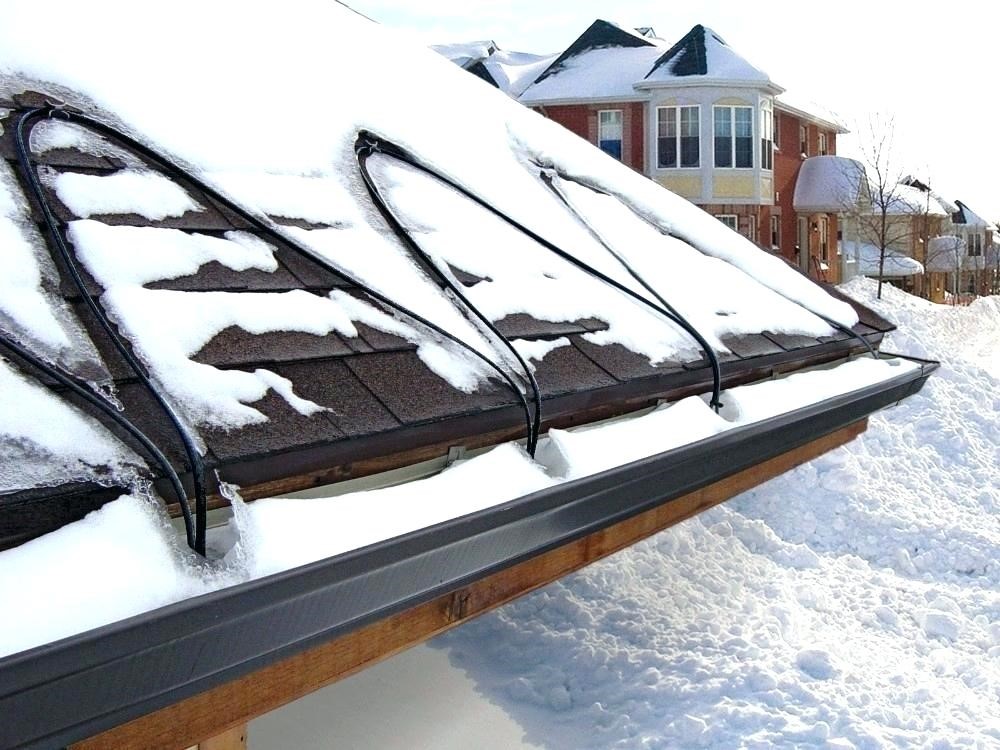Let’s start by asking the important questions about self-regulating and constant wattage cable – what is the difference between the two types of cable and is one more effective than the other?
An electric heating cable is a wire cable that produces heat, also referred to as heat trace cable. Heating cable can be used in a wide range of applications for the home, such as floor heating, heat loss replacement, pipe freeze protection, roof and gutter deicing, and snow melting. There are two different kinds of cables, self-regulating and constant wattage, and both can serve the same purpose, although the application will typically determine the best solution for the job.

Are heat tape, heat cable, and heat trace different?
Before we dive deeper into the differences between self-regulating and constant wattage cable, there is an important clarification that should be made in regard to the heating cable – whether it is self-regulating or constant wattage cable. Heating cable, specifically in the application of pipe freeze protection and roof and gutter deicing, is commonly referred to as heat tape with the assumption that they are two different types of systems. However, “heat tape” is simply a slang term that has gained wide usage in the industry, but is actually just another term for heat cable. Another common term that is used interchangeably in the specific context of pipe freeze protection is “heat trace”.
What is Self-Regulating Heating Cable?
Self-regulating heat cable has a special conductive core between the two bus wires. This core becomes more conductive during cold ambient conditions; therefore the heating cable will increase its wattage per linear foot in response to the cold. This feature makes it ideal for the freeze protection of pipes in the winter or for keeping gutters clear of ice formations. This type of cable will also decrease its power output (watts per linear ft.), in warmer conditions, when the higher temperature will make the special core less conductive.
Does self-regulating heat trace need a thermostat? Although it’s called “self-regulating,” the cable will not turn itself completely on or off. So, we do recommend that a controller or thermostat of some sort to be used with this type of heating wire.
Examples of Self Regulating Heat Trace Cable:
Self-Regulating Roof and Gutter Deicing Cable

It is used to not only prevent the formation of ice dams (which can devastate a roof’s shingles) but to also keep gutters flowing for effective removal of melted snow and ice. The cable is available in either 120V or 240V and is sold by-the-foot, and is meant to be cut-to-length by the installer on the jobsite.
This product is self-regulating so that it can respond to outdoor ambient temperatures as needed so that it is not unnecessarily over-using energy.
- g.Pipe Freeze Protection Self-Regulating Heating Cable

This product is used for what is called “pipe tracing” to protect non-flowing water pipes from freezing (which can result in very costly repairs) or, in some cases, for process heating. The heat trace cable can be used in light commercial and residential applications and is very similar to the self-regulating roof and gutter deicing cable (offering similar heat outputs and construction materials) but with some key differences in some of the accessories and installation methods. It is also sold by the foot.
This product is often installed in poorly insulated areas or perimeter walls to help protect vulnerable pipes so making the cable self-regulating allows for a high degree of performance and energy efficiency. There are also constant wattage versions of pipe tracing products but these require significantly more effort to install.
What is Constant Wattage Heat Cable?
Constant Wattage Heat Cable is a heating cable that has the same wattage per linear foot (power output), throughout its entire length. Since this wattage cable is generally not affected by varying ambient or pipe content temperatures, it provides a constant heat output. So, this type of heating cable is preferred for homeowners who want to ensure that environmental conditions will not affect their heating output. These heating systems usually rely on a control or thermostat to operate the system.
Examples of Constant Wattage Heating Cable:
TempZone, Environ, and Slab Heating Floor Heating Elements

All of the floor heating elements that are sold by HY are constant wattage, as are most of the electric floor heating elements sold across the industry. The reason for this is that it’s much easier to precisely control the heat in a room with a cable that consistently produces the same heat output. Then, the control (or thermostat), can use either the room’s ambient temperature or the floor temperature (through the use of a floor sensor that is installed with the heating elements) to alternate turning the radiant heating system on and off to achieve the desired results.
This “predictability” also allows for programmable thermostats to set up events so that you can customize your heating system to your schedule.
Snow Melting Mats and Cables

Which is Better–Self-Regulating or Constant Wattage Heating Cable?
Self-regulating heat cable is typically better for roof and gutter deicing and pipe freeze protection while constant wattage heat cable is better for snow melting and floor heating. The important thing to remember is that whether you’re using self-regulating or constant wattage, both heat cable types serve the same purpose of melting and deicing the outdoor snow/ice or heating floors indoors. For pipe tracing and roof and gutter deicing, self-regulating heating cables are more efficient because of their ability to heat up when the temperature drops outside. For snow melting projects, constant wattage heating cables are the preferred method because of their ability to continuously melt snow and ice under asphalt, concrete, pavers, and mortar – even during the harshest storms and climate changes. Similarly, floor heating benefits from constant wattage cables so that the heat output can be more accurately controlled by the thermostat for premium comfort levels.